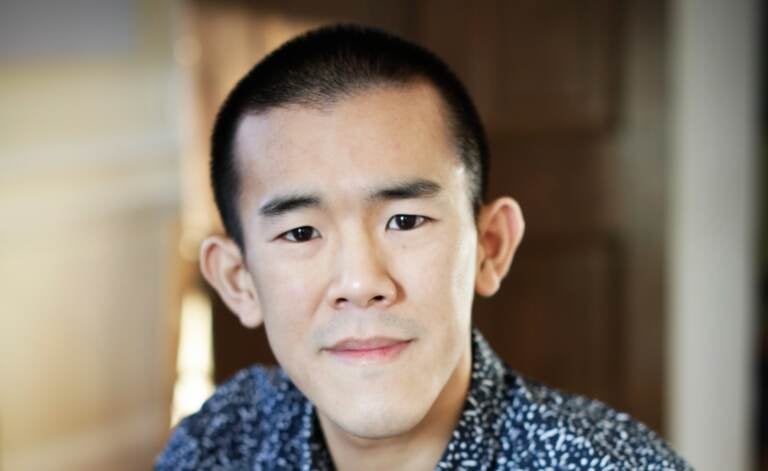Ed Yong on Animal Perception and the Pandemic
Listen 58:00
Ed Yong - Photo credit: Urszula Soltys
Science journalist Ed Yong is a must-read — with his in-depth reporting, his beautifully told stories, and spot-on analysis. He is one of the go-to-journalists for the most up-to-date and accurate information on the pandemic.
On top of his reporting, he also published a book in 2022, called “An Immense World: How Animal Senses Reveal the Hidden Realms Around Us,” about how animals experience the world, outside the confines of human senses.
“Each creature really is only able to sense a small amount of the fullness of reality,” he said. “I find this idea to be one of the most beautiful in biology. At the same time, it is humbling and also very expansive … because it tells us how much we’re missing, how much there is to understand and know about.”
The Pulse invited Yong to come to Philadelphia for a conversation at the Academy of Natural Sciences. He talked about what he learned while writing the book, and he also reflected on what it was like to work on the book during the pandemic, and why he thinks we will be stuck in an era of epidemics and pandemics yet to come.
Interview highlights
On a “scallop TV” experiment:
There’s a guy called Daniel Speiser. He’s done some great work on scallop vision, and … he did an experiment that he calls scallop TV where you put little scallops on, on small chairs and showed them movies, of flecks of food drifting past in the water. And sure enough, the scallops would open the shells and extend little sensory tentacles out to explore … hell of a thing watching a scallop be curious about the world.
On empathy:
I really, really tried to understand how animals use their senses, and a really cool part of the book was this idea that … “An Immense World” is not a book about superiority, but about diversity. So often one common way of engaging with animals’ sense is to prize them only when they exceed our own. So … an eagle’s vision or a shark’s sense of smell — the super sensers. But my argument here is that … the really interesting thing here … is the variation: it’s how disparate the experiences of other animals can be, so that even when you have something like a scallop, which has much poorer vision than ours, there is something truly fascinating about how it uses its eyes and what it gets from the world.
On reading a bat’s mind through echolocation:
It’s almost like one of the easiest to study because unlike, say, vision or smell, echolocation doesn’t work unless the bat is doing something. It needs to put out energy in the world. The bat says Marco, and it makes its surroundings say Polo back. Because of that, by recording the bats calls, you can kind of gauge its intent. So an echolocating bat will change the types of sounds it produces to get different kinds of information back from the environment. … You can record that with a microphone and it basically gives you an insight into exactly what the bat, what it’s trying to do at that moment. It’s sort of like reading the creature’s mind, and yet you can’t really read the creature’s mind. Despite … the technological sophistication that makes echolocation such an understandable sense, I still don’t know what it’s like to be a bat.
On the mystery of magnetoreception
Magnetoreception is the least understood of all the senses because it is by far the hardest to study. It is the only one, for example, we still don’t know where or what the sense organ is. … And partly that’s because magnetic fields are a very weird stimulus. They penetrate living tissue and are unimpeded by it. So while a lot of sense organs need to be on the surface, usually connected to some kind of hole in a shell or a skeleton, a magnetic receptor, an organ that senses magnetic fields could be anywhere, could be in my knee, it could be in my elbow, could be buried deep in my body. It could be spread out all across my body … we don’t know. Someone who studies this has described this to me as like maybe trying to find a needle in a needle stack.
On science as a social endeavor:
One of the biggest lies that is told about science and how it works is that it is a purely objective, like very clinical, very cold procession of facts. … Instead, it is just a very gradual and erratic stumble towards slightly less uncertainty. And it is profoundly a social endeavor, like, a scientist’s interpretation of the world depends on the results from her work, and the results from her work depend on the kinds of experiments that she decides to run. The kind of experiments she decides to run depend on the kinds of questions she thinks about asking in the first place. And the questions she asked in the first place are dependent on her values, her culture, the dogma within her field at a time, all of these like deeply social forces.
Why we are in an “era of pandemics”:
As the climate warms, animals are being forced to relocate to track their preferred environmental conditions. And that means that species are changing their ranges all the time. And that means that animal species that never previously co-existed will suddenly find themselves living in the same place because they will have moved and that will give opportunities for their viruses, which were unique and special to them to jump into new hosts and then eventually into us. There was a very good paper that came out this year showing exactly this process that is well underway and that we are living through probably like the golden age of that process of what I have termed the ‘pandemicene’ in my reporting where, and the horrible thing about that is that a lot of the spillovers will be concentrated in areas with high human habitation and that process is now effectively runaway, like, even if we halted all greenhouse gas emissions today, the momentum of climate change will mean that those that increased spillover dynamic will continue happening.
On hope as a discipline:
A lot of the problems that we’ve experienced in the pandemic boil down to a catastrophic failure of empathy. And while I’m not naive enough to think that learning about scallop eyes is suddenly going to make people take actions that protect their fellow humans, I do think that empathy is a muscle that you can flex and build and strengthen. And I hope that this is part of it. I also know that despair is lethal. Right now, we have a huge number of global, massive problems that need constant attention and persistence …The abolitionist Mariame Kaba talks about how hope is a discipline. And it’s not a nebulous, fluffy thing. It is something that requires effortful work, constant effortful work. And I think to sustain in the face of all the challenges and the tragedies that we see around us, we need to embrace things that bring joy, and that bring hope, and that bring wonder.
WHYY is your source for fact-based, in-depth journalism and information. As a nonprofit organization, we rely on financial support from readers like you. Please give today.






